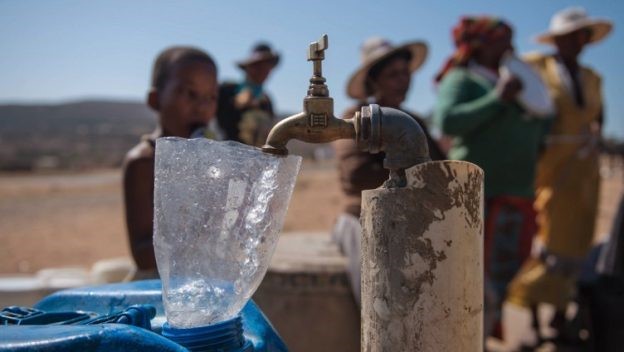
JOHANNESBURG, SA, (March 11th, 2020) – It’s not entirely true that South Africa is one of the driest countries
in the world. We only rank
39th in terms of lowest rainfall and, in terms of water
stress, we sit pretty much in the middle at 65th out of 180 countries.
I mention these statistics so that we
don’t go down an alarmist route. But don’t be fooled: water is an enormous
challenge for South Africa. Global rankings don’t reflect the nuances on the
ground, such as that the average rainfall varies dramatically between different
local regions. Examples of droughts causing havoc in the country are scattered
all across South Africa’s history.
Even our geography is suggestive of our
localised water challenges. The recent drought in the Western Cape nearly
brought an international city to its knees. Right now, the Northern and Eastern
Cape regions are experiencing incredible droughts, so much so that trees are
falling over.
But even Johannesburg, the commercial
crown jewel, has to pump water from Lesotho into the Vaal catchment dams. The
local area doesn’t produce enough water to quench Egoli’s thirst. Urbanisation
is adding to this: Johannesburg’s people are consuming 530-million litres more
water than
they are meant to.
These are not alarmist notions. They are
facts, and they are becoming much more aggravated due to climate change.
I’m not going to debate whether climate
change is happening or not, or what its causes may be. Anecdotally, it is clear
that the planet’s weather is acting erratically and becoming very
unpredictable. The climate is warming: according to SA’s National Climate
Change Response whitepaper, local temperatures have risen 1.5 times more than
the global average. If the world is getting hot, SA is one of the places
getting even hotter.
South Africa receives enough rain on
average. But that rainfall varies significantly, and SA does a poor job
capturing and managing water resources. Such neglect will have severe social
and political consequences. An LTAS study found that while climate change might
have a limited impact on the national level, it’s a very different and stark
picture at local levels.
If we don’t attack water capturing and
management challenges with vigour, the country is sure to end up in a major
catastrophe that could also collapse it. I’m again not being alarmist. Water
conflict is a real threat. Even now, the matter brews between Ethiopia’s dams
and Egypt further downstream. In Mali, there are frequent battles over water
sources.
South Africa can avoid such situations by
investing in proper water storage and management. We must also provide the resources
and data for planners. Our leaders must be able to act when required, because
the windows of opportunity to secure water are fleeting.
If you want an example of how
undisciplined water management can cause serious damage, look at Chennai in
India. Last
year the city’s taps ran dry because the monsoon
didn’t arrive on time. Nine million people had to line up at trucks to quench their
needs. Chennai is in a very water-rich area, but it only took one missing rain
season to throw all that into turmoil.
South Africa doesn’t have monsoons. It
needs to catch and preserve all the water that it can. That starts with proper
water infrastructure management. If we don’t invest in this, South Africa will
run dry.
For more information please contact: Chetan Mistry
+27 11 966 9311
Chetan.Mistry@Xyleminc.com
More news
- CONCOR KICKS OFF OXFORD PARKS BLOCK 2A PHASE I PROJECT
- PART 3: SA’S TRADE DILEMMA: A PODCAST DISCUSSION WITH DONALD MACKAY
- MBA: ‘HOW CONSTRUCTION FIRMS SHOULD PREPARE FOR THE WORST’
- PART 2: SA’S TRADE DILEMMA: A PODCAST DISCUSSION WITH DONALD MACKAY
- CONCRETE MASTERY TRANSFORMS WATERFALL CITY SKYLINE WITH DHL SERVICE CENTRE

